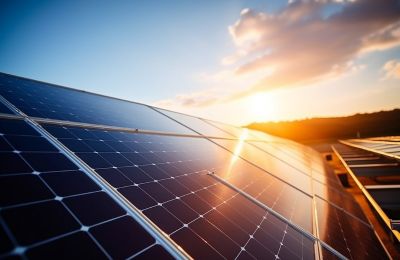New solar subsidies came overnight


They were recently halted, but now subsidies for photovoltaic systems are back. The industry feels caught off guard, while others are still hopeful.
The press release "Photovoltaic and electricity storage subsidies with 'Made in Europe' bonus" reportedly even surprised some people in the Ministry of Economic Affairs itself this Wednesday. This was despite the fact that it came from the new head of the department, Economics Minister Wolfgang Hattmannsdorfer, and State Secretary for Energy Elisabeth Zehetner. The industry has also learned from the media that – practically effective immediately – tax incentives for small PV systems for households and businesses are once again available.
The regulation stipulates 130 to 160 euros per kilowatt (peak) or 150 euros per kWh for electricity storage, approximately 15 percent of the costs. However, only 60 million euros are available in total, the minimum provided for in the Renewable Energy Expansion Act (EAG), and a fraction of the previous funding amounts. In 2023, the solar power expansion was initiated with 328 million euros in EAG funds and a further 280 million euros from the Climate Fund.
As welcome as the subsidies are, the procedure is equally irritating. "It's a bit concerning," says Christian Bräuer, Federal Master Craftsman of Electrical Engineers. This doesn't allow for predictability. He hopes the ministry will utilize the expertise he offered. The goal is a "smarter" PV expansion than before, one that doesn't rely solely on subsidizing modules.
"This is not how you treat private individuals and an industry," criticizes Vera Immitzer, Managing Director of the Photovoltaic (PV) Austria industry association. As with the end of the VAT exemption for PV (at the end of March), everyone was caught off guard "in a cloak-and-dagger operation." "I've experienced many strange appointments, but never the launch of a funding call within nine hours."
The lead time was even shorter at OeMAG, the processing agency for EAG funding: The necessary ministerial regulation was only published on Wednesday afternoon – four hours before the start of the award process. Nevertheless, the systems for registering applicants for funding were ready on time. According to OeMAG, everything has run smoothly so far, and demand is "normal," they told SN. Tickets can be drawn until 11:59 p.m. on May 8. The project documents, including the metering point for grid access, must be submitted within two weeks, after which the review will follow. In six to eight weeks, it will be clear whether the 40 million euros available for the first call have been exhausted.
PV Austria expects the limited subsidies to be quickly exhausted, despite the declining demand since the end of 2023. Following 2.6 gigawatts (GW) of solar power in 2023, 2.2 GW were added last year. Projects from that period are still being implemented. During the second round of tenders, starting June 23, a subsidy bonus of ten percent will be added for components such as inverters, modules, or storage systems that come from Europe. The list of approved manufacturers is expected to be finalized by then; they are currently being audited.
Starting in the fall, the ministry plans to amend the subsidies. Among other things, PV systems will only be available in combination with electricity storage. "That's sensible," says Immitzer. However, she is skeptical that the government wants to amend another energy law "unnecessarily" before the urgently needed and completed drafts for a new Electricity Industry Act (ElWG) and the Renewable Energy Expansion Acceleration Act have been passed.
by Monika Graf
Salzburg News
energynewsmagazine



